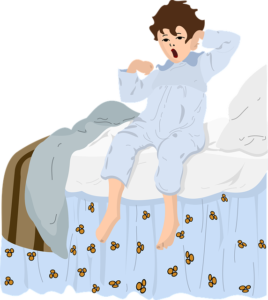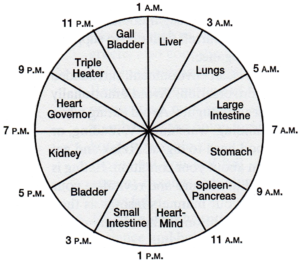
Sleep’s Importance in Our Health and Wellness
You hear it all the time about the importance of sleep and how we are getting less and less sleep. Sleep is a time for the body to renew itself, for the mind to rest, and for change to occur without us being in the way or having to do anything (except sleep!). Sleep deprivation can lead to accidents, lowered productivity in all aspects of your life, illnesses and dis-eases, memory loss, weight gain, and even wrinkled skin.
Sleep is so vital, some even say even doing everything else right in your wellness program is undone by a lack of sleep.

Why Is Sleep So Important?
It is simple to say what a lack of sleep does and say this is why it is important. It would be true, but I would like to share more than just the symptoms of a lack of sleep as why sleep is so important. I could also simply say sleep helps to regulate hormones and helps to balance our immune systems, but again this feels overly simplistic.
One way to consider why sleep is so important is the meridian clock of when organs cleanse themselves. I used this nice chart from Primrose’s Kitchen.

Another way to consider why sleep is so important is to look at the sleep stages and what occurs in each. The following is taken from the National Sleep Foundation.
Sleep architecture follows a pattern of alternating REM (rapid eye movement) and NREM (non-rapid eye movement) sleep throughout a typical night in a cycle that repeats itself about every 90 minutes.
What role does each state and stage of sleep play?
NREM (75% of night): As we begin to fall asleep, we enter NREM sleep, which is composed of stages 1-4
N1 (formerly “stage 1”)
- Between being awake and falling asleep
- Light sleep
N2 (formerly “stage 2”)
- Onset of sleep
- Becoming disengaged from surroundings
- Breathing and heart rate are regular
- Body temperature drops (so sleeping in a cool room is helpful)
N3 (formerly “stages 3 and 4”)
- Deepest and most restorative sleep
- Blood pressure drops
- Breathing becomes slower
- Muscles are relaxed
- Blood supply to muscles increases
- Tissue growth and repair occurs
- Energy is restored
- Hormones are released, such as: Growth hormone, essential for growth and development, including muscle development
REM (25% of night): First occurs about 90 minutes after falling asleep and recurs about every 90 minutes, getting longer later in the night
- Provides energy to brain and body
- Supports daytime performance
- Brain is active and dreams occur
- Eyes dart back and forth
- Body becomes immobile and relaxed, as muscles are turned off
The benefits received by sleeping are vital to a healthy mind and body. Notice the relaxed muscles, lowered blood pressure, and slower breathing that lead to tissue growth/repair, a restoration of energy, and hormones being released.
Some Common Symptoms Caused by a Lack of Sleep
- Mood and Behavioral Changes
- Depression
- Anxiety
- Trouble Concentrating
- General Aches and Pains
- Low/High Thyroid
- Hormonal Imbalances
- Changes in Blood Pressure
- Changes in Heart Rhythm
- Feeling Cold
- Disorentiation
- Paranoia
- Blurred Vision
- Fatigue
Tips to Get to Sleep Easier
For those who have trouble sleeping, please check out our Natural Solutions for Insomnia article.
Regular exercise, a dark bedroom, limiting blue light devices, creating a schedule of sleep, meditation, and gratitude practice can all help with getting to sleep easier.
In addition, I recently read a few articles about the Military Method (a method developed by the U.S. military, revealed in the 1981 book, “Relax and Win: Championship Performance”) for falling asleep instantly. It takes about 6 weeks of consistent practice to train the body and mind to be able to sleep instantly everywhere, but the claim is 96% of those using the method are able to fall asleep within 2 minutes of using it once they’ve gotten used to it. That is pretty impressive!
Here is how it is done (with my tweaks from an ND’s view):
- Take 6 slow, 4-square breaths breathing in for a four count, holding lightly for a four count, breathing out for a four count, and holding lightly for a four count. You can increase the number to 6 or 8 if it feels right.
- Relax your face, starting at the top of your head and make sure to include your jaw, tongue, and the muscles around your eyes.
- Allow your shoulders to lower into a natural position and consciously relax all the muscles in your arms, hands, and fingers.
- Relax your chest on an out breath.
- Relax your legs, starting at your gluts, moving to your thighs, then knees, lower legs, ankles, feet, and finally toes.
- Relax and allow your mind to clear, then picture something calming. Ideas include laying in the warm sand on a sunny beach, lying in a canoe on a calm lake with only blue sky above you, being snuggled in a black velvet hammock in a room that is pitch black, repeating “calm, calm, calm” to yourself, or feeling immensely grateful for things that occurred during your day (don’t think of the things, just feel the feeling of snuggly happiness).
Need more help? Schedule an appointment with Dr. Hartford today!
Be sure to subscribe to our newsletter for exclusive offers.
Note: Everything here is for information only. This is not meant to treat or diagnose any medical condition. Seek a qualified medical professional.

